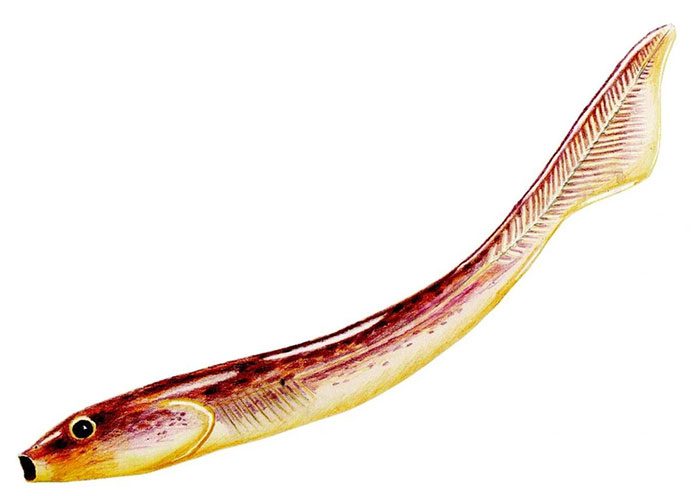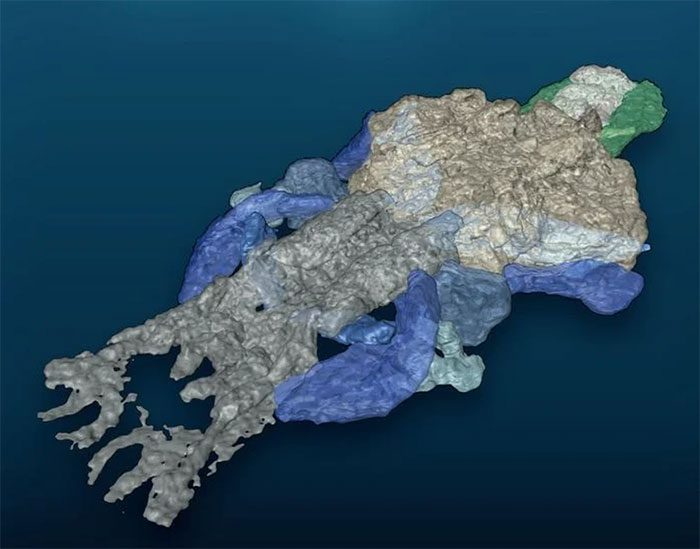An Mysterious Extinct Creature Finally Finds Its Place in the Tree of Life.
The small animal, which resembles a fish, is named Palaeospondylus gunni. It was first discovered in fossils in Scotland in 1890, living approximately 390 million years ago during the Devonian period.

This creature is named Palaeospondylus gunni.
According to a recent analysis, scientists believe that Palaeospondylus gunni may surprisingly be one of the oldest ancestors of tetrapod species, including humans, based on their similar structural characteristics.
Initially, scientists thought that Palaeospondylus resembled an underdeveloped quadruped species. This means that Palaeospondylus could have followed a different evolutionary path.
However, Palaeospondylus and Sarcopterygians—a type of lobe-finned fish—share features similar to those found in later four-legged animals.
Interestingly, within the skull of Palaeospondylus, the research team discovered three curved notochord tubes, which they believe may have later evolved into the inner ear of vertebrates and jaws.

The recreated skull structure in a 3D image of Palaeospondylus.
Yuzhi Hu, a physicist at the Australian National University, stated that this strange creature has puzzled scientists since its discovery in the 1890s. “We consider this species as a puzzle that is difficult to solve,” Hu said.
It is known that the difficulty faced by scientists arises from the extreme challenge of comparing the morphology of this animal, based on the remaining specimens.
However, recent advancements in high-resolution 3D imaging and segmentation have turned what was once an impossible task into reality. Now, having a well-preserved specimen will help accelerate research processes and uncover the origins of the creature.
In the near future, researchers have indicated that they will continue to investigate this creature to further clarify its position in the animal phylogenetic tree.





















































